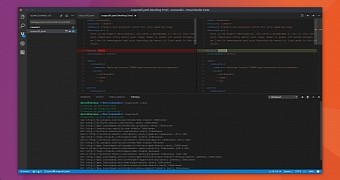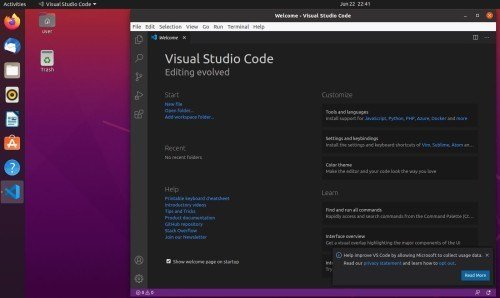

The installation process is fairly straightforward, and will of course be different for each operating system. For example, I had a version of Go installed on my machine from the time that I used when running some customisations setting up the powerline-go configuration for my ohmyposh setup. It may be preinstalled by your operating system, or you may have installed it manually.
#Ubuntu visual studio code full
You can find the full list of available versions of Go for download here.Įven if you haven’t used the go command before, it’s possible that you have a version of Go installed on your machine. if there are specific language version dependencies). This is useful if you want to use different versions of Go to build different projects (e.g.
#Ubuntu visual studio code install
Note: It is possible to install multiple versions of Go on your machine. If we’ve never used the go command before, it’s possible that you don’t have Go installed on our machine yet.įortunately, the Go developer documentation has a great installation guide.
#Ubuntu visual studio code code
This means that you need to compile your code before you can run it. Like many other languages, Go is a compiled language. Got that configured? Great! Let’s get started! Setting up Go on your machine I personally use Ubuntu 20.04, but you can use any of the distributions that are available.

You’ll be familiar with several of the projects that it powers, including Hugo, Docker, Terraform, Kubernetes and more.

Go was originally developed by Google in 2007, and is now maintained by the Go team. However, there are a few additional language functions (particularly around memory safety and garbage collection). From a language design perspective, it is very familiar to working in C. It is a great language for building web applications, but it’s also great for building command-line applications. Go (commonly referred to as golang) is a statically typed, compiled programming language. In this blog post, I’m going to walkthrough the process of setting up Go on my machine, and then the experience of using Visual Studio Code and Windows Subsystem for Linux (WSL) with Ubuntu. It’s fair to say that my development environment was ‘functional’, but I wanted to revisit it to make sure that I could get the best out of it. I’ve wanted to learn Go for a while, so I thought this could be a great opportunity to get hands on and try it out. Over the past few weeks, I have been working on a new set of pet projects. Time’s pushing on… Let’s git out of here.Setting up the Go Visual Studio Code Extension.


 0 kommentar(er)
0 kommentar(er)
